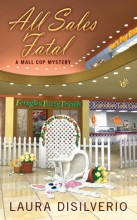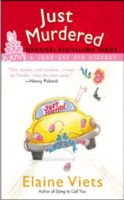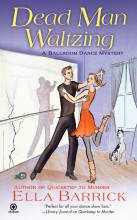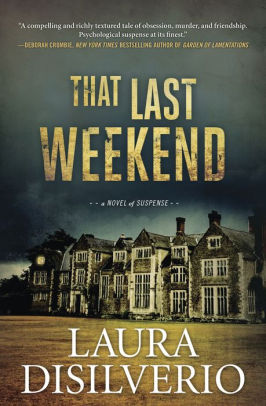A mystery is a mystery is mystery, right? Not so fast.
Cozy mysteries have their own special place.
Recently, I overheard two women fall into a conversation about the book one of the women was reading at Panera. It was a mystery. (Hank Phillippi Ryan’s Face Time, to be precise.) Each woman declared “I love mysteries!” and then proceeded to list her favorite authors. There was zero overlap between the two lists. They seemed puzzled and each wrote down the other woman’s faves, promising to check them out. I could have told them they were not going to like each other’s books, but I (uncharacteristically) kept my mouth shut. It was clear to me, eavesdropping, that one of the ladies read nothing but cozy mysteries and the other read police procedurals.
The book-selling industry has parsed mystery into so many genres it’s hard to keep track of them: hard-boiled or soft-boiled PI, cozy or traditional, paranormal, suspense, legal, historical, police procedural . . . the list goes on and some mystery are a conglomeration of the above, such as Jim Butcher’s Dresden Files which features a wizard (paranormal) as a hard-boiled PI.
What, Exactly, Is a Cozy Mystery?
 Cozy mysteries, also known as traditional mysteries, are characterized by several elements:
Cozy mysteries, also known as traditional mysteries, are characterized by several elements:
- Small town or rural setting
- An amateur sleuth heading up an ensemble cast of quirky family members, co-workers, and friends
- Frequently hang on a hobby or activity “hook” such as knitting, scrapbooking, cooking, etc. (This is true of modern cozies more than of classic ones. It’s a marketing ploy that enables publishers to refer to “the Mall Cop mysteries” or “the Dead-End Job series.”)
- Little or no language more profane than “damn”
- Most of the violence and sex occurring “off-stage”
- “Happy,” unambiguous resolutions: good guys win, bad guys lose (get punished by the judicial system for their crimes, usually)
Examples of Popular Cozy Mystery Series
 Agatha Christie is usually credited with being the (unintentional) mother of cozy mysteries with her Miss Marple and Hercule Poirot. Successful modern practitioners of the traditional mystery include Carolyn Hart, Elaine Viets, Maggie Sefton, Sheila Connolly, Avery Aames, Joelle Charbonneau, Lorraine Bartlett, and many others. Notice the lack of male names? That doesn’t mean that men don’t write cozies—they do. They usually publish them under female pen names. One exception is Donald Bain who “co-writes” the Murder She Wrote books with Jessica Fletcher. My own Ballroom Dance mystery (which I write as Ella Barrick) and Mall Cop series (featuring a partially disabled military cop turned mall security officer) are cozy mysteries.
Agatha Christie is usually credited with being the (unintentional) mother of cozy mysteries with her Miss Marple and Hercule Poirot. Successful modern practitioners of the traditional mystery include Carolyn Hart, Elaine Viets, Maggie Sefton, Sheila Connolly, Avery Aames, Joelle Charbonneau, Lorraine Bartlett, and many others. Notice the lack of male names? That doesn’t mean that men don’t write cozies—they do. They usually publish them under female pen names. One exception is Donald Bain who “co-writes” the Murder She Wrote books with Jessica Fletcher. My own Ballroom Dance mystery (which I write as Ella Barrick) and Mall Cop series (featuring a partially disabled military cop turned mall security officer) are cozy mysteries.
Why We Read Them
 I can’t speak for the whole reading public, of course, but I enjoy writing and reading cozy mysteries because they give me a puzzle to wrestle with (figuring out whodunit) without drowning me in the kind of violence, gore and depressing examples of people’s inhumanity to each other that I can get from any news outlet. As with many mystery genres, they’re about the triumph of the individual (the amateur sleuth, in this case) over evil (the murderer). They’re about restoring balance in the world (usually the small world of a Cabot Cove or Fernglen Galleria), of righting a wrong, or, in the case of murder, punishing the killer. The sleuth always figures it out (with the help of her family and friends and usually with a knitting needle or spatula at the ready) and the murderer gets what’s coming to him or her. I also enjoy the on-going relationships that are a staple of cozies; I like checking in on a character’s romantic life, frustrations with her cantankerous grandma, or adventures with her best friend. What’s not to like about that recipe?
I can’t speak for the whole reading public, of course, but I enjoy writing and reading cozy mysteries because they give me a puzzle to wrestle with (figuring out whodunit) without drowning me in the kind of violence, gore and depressing examples of people’s inhumanity to each other that I can get from any news outlet. As with many mystery genres, they’re about the triumph of the individual (the amateur sleuth, in this case) over evil (the murderer). They’re about restoring balance in the world (usually the small world of a Cabot Cove or Fernglen Galleria), of righting a wrong, or, in the case of murder, punishing the killer. The sleuth always figures it out (with the help of her family and friends and usually with a knitting needle or spatula at the ready) and the murderer gets what’s coming to him or her. I also enjoy the on-going relationships that are a staple of cozies; I like checking in on a character’s romantic life, frustrations with her cantankerous grandma, or adventures with her best friend. What’s not to like about that recipe?
Cozies Don’t Get No Respect
Although some dismiss cozies as “formulaic,” I’d suggest that’s true of most fiction, other than the most experimental. Consider: Protagonist confronts a problem, suffers setbacks, and emerges somehow changed at the end of the story. That “formula” describes what happens in most genre fiction, as well as in most great literature. Gone with the Wind? Yup. The Silence of the Lambs? Yup. All of my books? Yup. Yes, I’m being a tad simplistic for the sake of this description of cozies, but it should be the quality of the writing and the story that matter, not whether or not the story structure can be called “formulaic.” After all, a sonnet is a formula—right?—and yet we seem to think Shakespeare’s are still worth reading. And since Agatha Christie is the single best-selling author of all time (far outstripping the James Pattersons and J.K. Rowlings), we can safely say that there’s something appealing in the cozy formula.
See my recent series at Career Authors for a complete guide to the formula for writing a cozy mystery.



Cozy mysteries are fun to read and write…like you pointed out, you get a murder and justice without all the gore. And they have some humor, too, which is hard to put into a hard-boiled mystery. I just wish Amazon would make a paranormal mystery category!
Shannon,
Thanks for commenting. You’re so right–it’s very hard to put humor into many mystery genres without sounding ghoulish or completely ruining the tone. I’ll bet if you (and many friends) went and “tagged” enough books on Amazon as “paranormal mystery,” they might end up making a category out of it.
Laura: Thank you so much for coming to the defense of the “cozy” mystery! I’ve loved them as long as I can remember, starting with the Judy Bolton mystery series by the wonderfully prolific Margaret Sutton. When I decided to write a mystery it naturally had to be a cozy! The first one is set to appear early next year, and I’m working on the second in the series. Long live the cozy mystery!!
CONGRATS, Patricia! What wonderful news about your impending publication. What’s your cozy about and what’s the pub date? Best of luck with it and thanks for stopping by here.
This is a great piece on mysteries and what makes cozies different and enjoyable.
Thanks, Dru Ann!
Thanks for a very clear definition of cozy mysteries. I have loved them forever and now I know why, thanks to you.
Laura, nicely put! Thanks! I prefer to think of “conventions” rather than a formula. We have certain expectations of each type of book we read — mystery, romance, fantasy, or as you point out, almost any book — that the writer must meet. How she does that — well, that remains the mystery!
Leslie–Thanks for dropping by. I completely agree that we have expectations of any book we pick up and it’s the writers who can say something new, original or powerful within a familiar framework who take the genre to new heights.
Wonderful Post!!! I will be sharing on my Facebook Fan Page.
Lori,
Thank you for sharing this or I would never have found it. I enjoyed this post and blog.
Thanks, Lori.
I enjoy the cozies and have seemed to have started collecting them as I can’t read as fast as I buy. I enjoy that they are fast, fun, and light to read not to mention that you get a little crime in there without the blood and gore. I have fun trying to solve the whodunit. I would love to live in any of the small towns in these books, they are a lot nicer than the small town I grew up in. They seem to give me a place to escape to. So my hats off and a big thank you to all who right them, keep up the good work.
I’m with you, Angela–I love trying to beat the amateur sleuth to the solution of the mystery, of unraveling the puzzle. I don’t love the book if I can do that on page 2, though!
Great way to put it! I’m a member of the “Cozy Mysteries” board on Goodreads, and the question as to just what constitutes a cozy frequently arises from “newbies”. Your description fits mine to a “T”, and I’m going to suggest people check out your page! (And I love your Southern Beauty Shop, Ballroom and Mall Cop books! I’m also in Colorado!)
Hi, Melodie. I’m more than happy to have you suggest folks check out my post. Thanks for your kind words about my series.
Great post! Found it thanks to Dollycas. I hope it’s all right that I shared it too!
Of course it’s okay to share, Mari. The more the merrier. It’s great to know there are so many cozy lovers out there.
I love your definition of Cozy Mysteries. I had not heard of the genre until I started reading challenges. Now, I find myself writing reviews of them and recommending them to others.
You are so right, Laura – although I do read books in some other genres, I typically read cozies and feel no shame in that. I guess that’s what attracted me to Malice in the first place. I love all your series and thank you for sharing your talent with readers like me (as well as thank you for your service to our country – from a 36 year DoD civilian.)
Nice article. I am new to writing cozy mysteries (historical cozies) and I am enjoying the process so far very much. I also think that cozies (especially a series) tends to focus much more on character than other mysteries, since character is just as important as plot. The characters might not be explored in the same way as in, say, a literary novel, but I like that you can build characters over time.
I’ve been trying to read more cozies (historical, mostly, but also contemporary) to get familiar with the genre and one thing I do find that disappoints me a bit is that there seem to be quite a few authors of cozies that don’t seem to know very well the basic rules of fiction writing, as if they’ve never picked up a writing book in their lives. This does grate on my nerves a bit. I’ll admit that I am quite picky about this, coming from a college English literature background. Stuff like using “he/she” to make dialogue tags disappear instead of addressing the names of the characters in every line, shifting points of view when the story is clearly being told from one person’s POV, etc., do interfere with my enjoyment of the reading. I’m trying to get past that, though, since I’m reading the cozies mainly as a way of researching the conventions to know what readers expect and also as a way to learn what not to do with my own writing so that I can make the story more enjoyable to readers.
Tam
Hi, Tam. Thanks for dropping by. The characters are, indeed, crucial to a cozy’s success and I, like you, enjoy developing them over time. I’ve seen the kind of writing problems you talk about in some cozies, but I’ve also seen them in other genres. I think more and more cozy writers are serious about their craft and take advantage of workshops by organizations like Sisters in Crime, Mystery Writers of America, and even from Romance Writers of America to work on their writing skills. I know I do. You’re being smart to read as many as you can to research the conventions; hopefully, you’ve found some writers that you really admire and whose stories you enjoy. Good luck with your series!
Thanks for such an interesting article. I love cozy mysteries and will definitely check out your books soon.
I have recently created my own blog on this genre and have given a comprehensive version of the definition in the “INTRODUCTION”, which I would like to share here.
http://acozymurderisannounced.blogspot.de/2015/01/introduction.html?m=1
Thanks again…!
I am currently planning and plotting my very first book, a cozy mystery. Thank you for your article. It has inspired me and I now feel less intimidated at the prospect of writing it.
You’re very welcome, Rosie. I’m glad it was helpful. Best of luck with your cozy mystery! What’s the hook for it?
If only all those authors would follow your definition! Recently I’ve come across so many bad books labeled Cozy Mystery that I sometimes wonder if I ended up in the children’s book department.
They have no plot, there is no crime, the characters are one-dimensional, the scenes don’t lead anywhere since they are simply disconnected.
I really wish there were many more good examples, but unfortunately …
Sometimes the fact that I’m male and at the same time a fan of CM excites surprise, but I can tell you that not every guy wants to read action, gore, and sex scenes.
What I love and expect in a mystery story is intellectual stimulation as you describe it — and that’s so hard to find these days.
Thanks for writing, Brian, and for being a cozy mystery fan. I know several men who are great CM fans. Have you ever read any of Miranda James’ cozies? The author is a man, Dean James. They’re very popular. There are, unfortunately, bad books in all genres.
Thank you for the recommendation, Laura. I will give it a shot, probably next Sunday.